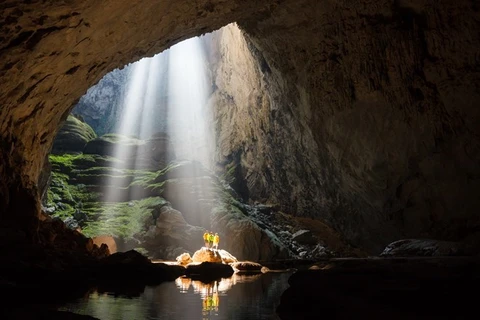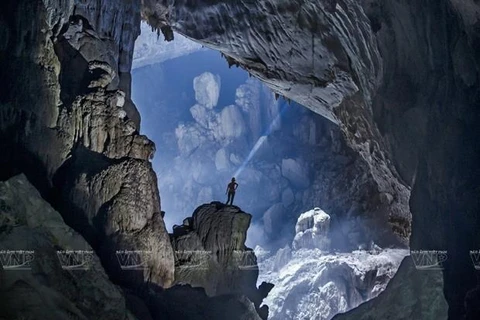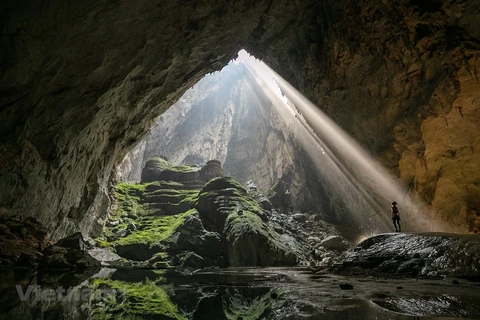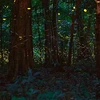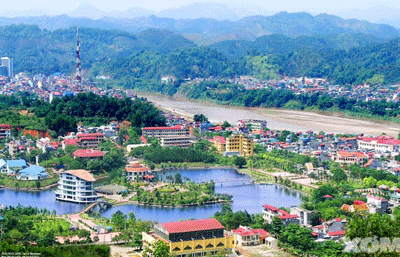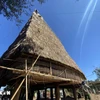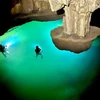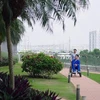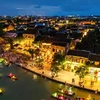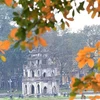Hanoi (VNA) – Son Doong of central Quang Binh province, crowned the biggest cave on the planet in 2009, continues to grab the headlines. But that doesn’t mean it deserves all the attention. The Phong Nha-Ke Bang National Park offers every caving experience imaginable. The Tu Lan cave system, one of Vietnam’s most diverse subterranean kingdoms, has become a newly-emerging destination for backpackers.
Located 70km from the Phong Nha-Ke Bang National Park and next to Tan Hoa commune of Minh Hoa district, Quang Binh province, the Tu Lan cave system is hidden among meadows, corn and peanut fields.
To discover this cave system, tourists will go across meadows, green valleys and jungles, conquering superb mountain slopes and swimming through underground rivers.
The Tu Lan cave system consists of more than 10 caves, some of which were discovered in 1992, and some were found only in the past few years.
Ton cave, first discovered in 1992 and then further researched in 2012, is the first to explore this complex cave system.
From the dry entrance of Ton cave, visitors can see the beautiful scenery of a valley below. An inner ladder leads to the cave floor, and from there the journey begins. Visitors have to swim through the cave to reach the exit on the other side.
Locals knew about some of these caves many years ago, but they began learning and researching more about this cave system until Oxalis and the professional cave discovery team discovered it.
As tectonic plates in this region always move and clash into each other, mountains are still forming and getting big. Rivers continue cutting into the foothills, erode and create new caves. Wet caves are often lower and younger than dry ones, as wet caves were just formed.
With its untouched beauty and cave system, Tu Lan was selected to be a filming site for Hollywood blockbuster Kong: Skull Island in 2017.
In 2018, the system’s Hung Ton and Chuot caves, meadows, corn fields and Rao Nan river bank were chosen to appear in Vietnamese film Nguoi Bat Tu (The Immortal), which gained big praises from both domestic and foreign audiences.
Oxalis Adventures has organised diverse tours to Tu Lan cave system from one to four days.
The total length of Tu Lan cave system is nearly 20km, including 20 dry and wet caves with many different terrain types.
To explore some caves, visitors have to swim through subterranean rivers surrounded by unique stalactites, especially in dry caves.
While Bi Mat cave is a small cave covered by stalactites of different shapes, Song Oxalis cave is a magnificent palace with rare coral stalactites.
Tien cave is the largest dry cave in Tu Lan system and has a zipline system "Flying Fox" that uses a protective belt and steel cable right inside the cave. It is 2.5 kilometres long, with an entrance leading to the forest. Tien cave was explored and mapped by British cave experts in 2015 and 2016. The cave is dry throughout the summer, but a river is formed inside the cave in the rainy season. The water stream of Tu Lan cave has to flow two kilometres underground to reach Tien cave and its lake. Tien cave consists of numerous unique stalactites, cave corridors, limestone layers with various veinstones on the rock walls and a population of bats living inside the cave.
All camping sites are located in the most beautiful valleys of the Tu Lan system, next to green rivers or beautiful natural lakes which are ideal for tourists to swim and enjoy the atmosphere.
A special feature of the tour to explore Tu Lan cave is that tourists can trek through forests, wade through streams, explore cave rivers and enjoy the scenery at the Tu Lan camping sites.
Tourists also have a chance to chat with tour guides and local porters to understand more about locals’ lives and culture./.



